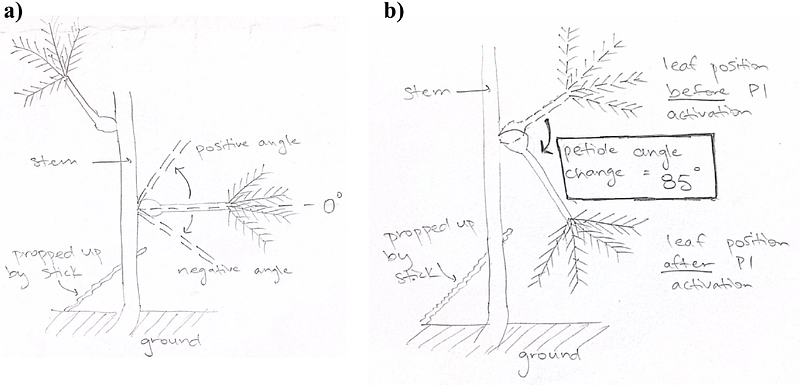Mechanisms and Plasticity in Leaves and Leaflets in a Creeping Legume, Mimosa pudica

Mechanisms and Plasticity in Leaves and Leaflets in a Creeping Legume, Mimosa pudica
Kellogg, M. T.
AbstractMimosa pudica (Fabaceae) is a creeping plant known for its rapid thigmonastic movement upon touch, facilitated by specialized joint-like thickenings called pulvini. This study examines the activation behavior of the primary pulvinus (P1) in response to repeated touch stimuli, providing evidence for a mechanical exhaustion mechanism underlying the response. Experiments were conducted on M. pudica in Cuajiniquil, Costa Rica. Petiole angle change was recorded following repeated P1 stimuli, both with (P3 group) and without (NS-P3 group) concurrent tertiary pulvinus (P3) activation. Results showed the highest mean petiole angle change and P1 activations at the first stimulus, with a significant decline at the second stimulus and sustained lower responses thereafter. Both the NS-P3 and P3 groups exhibited similar overall behavior, characterized by a sharp decline in petiole angle change and P1 activation counts after the first stimulus. However, the P3 group had a lower initial petiole angle change compared to the NS-P3 group, and exhibited significant wave-like behavior, suggesting a more pronounced refractory period due to the combined activation of both P1 and P3 pulvini. The findings support a mechanical exhaustion explanation for the primary pulvinus behavior over repeated stimuli, where the rapid decline and sustained low responses suggest energy depletion and slow ion channel reset.